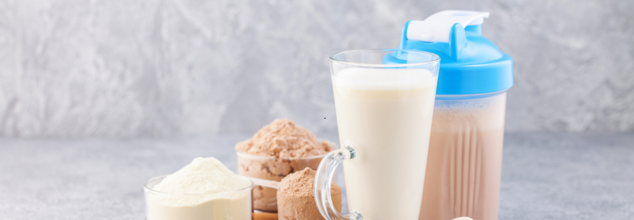- Health Conditions A-Z
- Health & Wellness
- Nutrition
- Fitness
- Health News
- Ayurveda
- Videos
- Medicine A-Z
- Parenting
- Web Stories

Foods That May Be Giving You Acid Reflux: How To Tame The Burn
Foods That May Be Giving You Acid Reflux: How To Tame The Burn
At 35, Neha often found herself ending long days with that familiar, uncomfortable burn in her chest. She loved spicy foods and an occasional late-night snack, but over time, what started as mild discomfort had turned into nightly battles with acid reflux. "I’d lie down, and that burning feeling would creep up my chest," she shared, "and sometimes it even left a bitter taste in my mouth." It wasn’t until she started learning about foods that trigger acid reflux that she realized her diet and lifestyle could be part of the problem.
Acid reflux is an uncomfortable condition that affects millions, but it’s also manageable. If your symptoms persist or worsen, consult with a healthcare professional for guidance tailored to your needs. With the right balance, you can enjoy your meals without the burn.
What Is Acid Reflux?
Acid reflux occurs when stomach acid flows back into the esophagus, leading to the burning sensation known as heartburn. Chronic acid reflux, or GERD (Gastroesophageal Reflux Disease), can also cause a range of other symptoms like regurgitation, sore throat, chronic cough, and hoarseness. The condition happens when the lower esophageal sphincter, a valve that keeps stomach acid in the stomach, doesn’t work effectively, allowing acid to escape upward. Factors like diet, weight, and certain lifestyle habits can worsen this condition.
If you’re like Neha and struggle with acid reflux, learning to spot your triggers can be a game-changer. Here are some common foods that may be responsible.
1. Caffeine
Your morning cup of coffee might be an unexpected culprit. Caffeine is known to relax the lower esophageal sphincter, making it easier for stomach acid to travel back into the esophagus. This effect isn’t limited to coffee—tea, sodas, and energy drinks can also have the same impact. If caffeine is your go-to for an energy boost, consider switching to herbal teas or water when you can.
2. Tomato-Based Foods
Tomatoes, though packed with antioxidants, are naturally acidic and can easily trigger acid reflux. Tomato-based foods, such as pasta sauces, ketchup, and salsa, can cause irritation in the esophagus and exacerbate reflux symptoms. For those with GERD, cutting back on tomatoes or choosing low-acid tomato products may bring relief.
3. Spicy and Fatty Foods
While spicy foods can bring excitement to your meals, they may also bring unwelcome symptoms. Spicy dishes stimulate the production of stomach acid and can cause heartburn, especially when consumed in large quantities. Similarly, fatty foods like fried items, cheese, and butter slow down digestion, increasing the likelihood of acid reflux. Opting for lighter, non-spicy meals can help you avoid discomfort.
4. Chocolate and Peppermint
Chocolate and peppermint may seem harmless, but they can contribute to acid reflux in certain individuals. Both have properties that relax the lower esophageal sphincter, creating an easier pathway for acid to reach the esophagus. If these are regular indulgences, it might be worth cutting back or enjoying them in moderation to see if your symptoms improve.
Simple Lifestyle Tips to Reduce Acid Reflux
Avoiding certain trigger foods is a good start, but there are also simple lifestyle changes that can help manage acid reflux more effectively:
- Track Your Triggers: Keeping a food diary can help you identify the specific foods and beverages that lead to symptoms. Not everyone has the same triggers, so pinpointing yours can make it easier to tailor your diet.
- Eat Smaller, More Frequent Meals: Eating smaller meals more often rather than one large meal can reduce pressure on the stomach and lower the likelihood of reflux.
- Walk After Meals: Light activity, such as walking, aids digestion and helps empty the stomach faster. This can reduce the chance of acid moving upward into the esophagus.
- Avoid Late-Night Eating: Give yourself at least two to three hours between your last meal and bedtime. Going to bed on a full stomach increases the chances of acid reflux as gravity no longer helps keep stomach acid down.
Portion Control
Especially during festive seasons or gatherings, it’s easy to overeat, but portion control is vital for reducing acid reflux. Smaller portions allow time for proper digestion, minimizing the amount of acid that can escape upward. This practice also makes it easier to keep track of your intake and avoid overfilling your stomach.
Disclaimer: This article is for general information purpose only, it is not a substitute for professional medical advice. Please consult a healthcare provider for personalized guidance.

Credit: Canva
White Pumpkin Juice-What Are Its Health Benefits And How To Make It?
White pumpkin or Ash Guard is a considerably rare vegetable which is packed with nutrients. It is rich in Vitamins A, B6, C, E and other important minerals. This makes it a perfect pick for those battling high cholesterol and heart issues. Research proves that it also acts as an antidepressant, promotes eye health, and is beneficial for people with asthma. They also help treat peptic ulcers, reduce inflammation, and have anti-ageing effects. All the aforementioned benefits are carried to its juice as well.
Here's What Is Special About Ash Guard Juice?
1. Rich in Nutrients
White pumpkin juice is a powerhouse of essential nutrients, including vitamins A and C, potassium, and iron. Vitamin A is crucial for maintaining healthy vision and supporting immune function, while vitamin C acts as a potent antioxidant, aiding in tissue repair and enhancing the immune system. Potassium helps regulate blood pressure and supports heart health, and iron is vital for oxygen transport in the blood. Incorporating white pumpkin juice into your diet can contribute to overall well-being by providing these essential nutrients. citeturn0search0
2. Powerful Antioxidants
White pumpkin juice is rich in beta-carotene, a powerful antioxidant that combats free radicals in the body. Free radicals can cause oxidative stress, leading to cellular damage and contributing to chronic diseases. By neutralising these harmful molecules, beta-carotene helps protect cells, supports overall health, and may reduce the risk of certain diseases. citeturn0search0
4. Radiant Skin
Packed with vitamins and antioxidants, white pumpkin juice promotes healthy and glowing skin. The nutrients help combat skin damage caused by environmental factors, reduce signs of ageing like wrinkles and fine lines, and improve overall skin texture and appearance. Regular intake can lead to a more youthful and radiant complexion. citeturn0search0
5. Boosts the Immune System
Rich in vitamin A, white pumpkin juice supports the immune system by enhancing the body's defense mechanisms against infections. Vitamin A also plays a role in maintaining healthy mucous membranes and skin, which serve as barriers to pathogens. Additionally, it supports vision and helps prevent eye diseases, including night blindness and age-related conditions. citeturn0search0
6. Organic Energy Enhancement
White pumpkin juice serves as a natural energy booster without the drawbacks of caffeine. Its nutrient-rich profile provides sustained energy levels throughout the day, making it an excellent choice for those seeking a refreshing and nutritious beverage to combat fatigue and enhance overall vitality. citeturn0search0
7. Reduces Inflammation
The anti-inflammatory properties of white pumpkin juice help in reducing inflammation in the body. Chronic inflammation is linked to various health issues, including arthritis and heart disease. By incorporating this juice into your diet, you may help alleviate inflammation-related symptoms and promote overall health.
How To Prepare A Refreshing Ash Guard Juice At Home?
To make white pumpkin juice, start by peeling and deseeding a fresh white pumpkin. Cut it into small cubes and rinse them thoroughly. Add the cubes to a blender with a little water to ease blending. Blend until smooth, then strain the mixture using a fine sieve or muslin cloth to remove pulp. For enhanced taste, you can add a pinch of black salt, a squeeze of lemon juice, or a few mint leaves before blending. Serve the juice chilled. It’s best consumed fresh to retain maximum nutrients and flavour. Avoid adding sugar to keep it healthy and natural.

Credits: Canva
How To Take Your Protein Powder The Right Way?
Protein shakes are always the most popular when it comes to fitness. It is used to boost your protein intake and also support your muscle building. Not only that, but the benefits extends to supporting your bone health and weight loss. It is not an unknown fact that protein is the building block of human body and is one of the important macronutrients that helps us with growth, along with supporting cells, organs and tissues.
The great thing is that now it is easily accessible as it can be consumed via shakes. But, how exactly must one consume it? Is there a right way to consume it?
So, What Is The Right Way To Consume Protein?
The million dollar question is, whether you should consume your protein powder with milk or water? The answer depends on your health goals and of course, taste preference.
If you are focusing on a low-calorie intake, you can go for a water based shake, since water has no calories.
However, if you want to add on a few calories in your drink, you can then go ahead with milk. Milk is also packed with carbs, fat, and protein. There is substantial data that also supports that a cup of milk contains around 150 calories, 11.3 grams of carbs, 7,81 grams of fat, and 7.98 grams of protein.
What Else Matters When You Choose A Base For Your Protein Shake?
The taste and texture of your protein shake often come down to personal preference. If you enjoy a creamier consistency, try blending your shake with plant-based milks like almond, coconut, or soy. These options add richness and subtle flavor. Water-based shakes, on the other hand, tend to be thinner and more neutral in taste.
For those who are lactose intolerant—a condition where the body has trouble digesting lactose, the natural sugar in dairy—using water or lactose-free milk is a gentler choice. Consuming regular milk can lead to uncomfortable symptoms like bloating, gas, and even severe diarrhea.
What Are The Benefits Of A Water Based Protein Shake?
- Water has zero calories, so it could be a great way to consume for weight loss
- Water-based protein shakes are convenient and can be enjoyed without worries about the drink going bad
- When water is mixed with proteins, it can help cut your carbs intake
What Are The Benefits Of A Milk Based Protein Shake?
- Adding a cup of milk to your shake boosts its protein content
- Milk contains both whey and casein proteins, which support muscle repair and growth
- It's also a good source of carbohydrates that help restore glycogen—your body’s energy reserve used during intense workouts
- Research suggests that consuming milk after exercise can enhance muscle growth, ease post-workout soreness, reduce muscle damage, and aid rehydration
- In short, milk helps build strength and supports overall recovery
Which One Gives The Best Results?
Experts say that whether you use milk or protein powder in your shake, both can help you reach your fitness goals. However, mixing protein powder with milk might be better for people who go to the gym or lift weights often.
Milk supports muscle growth and helps reduce soreness and muscle damage after workouts.
Protein powders like whey or pea protein offer similar benefits. So even if you choose water instead of milk, you’ll still get the advantages of using a good protein supplement.

Credit: Canva
Is Climate Change Affecting The Rice In Your Kitchen?
As climate change intensifies, researchers have predicted that arsenic in rice could increase and trigger a major public health crisis. Rice is a staple in many countries. In Asia, particularly in Japan and Korea, it is an important component in all meals. A rise in the arsenic, therefore, could seriously exacerbate deadly diseases, including cancer.
What is Arsenic?
Arsenic is a naturally occurring metallic element, widely distributed in the Earth's crust and found in various forms, like inorganic and organic. Research shows that it is toxic and does lead to severe health issues like cancers of the bladder, lung and skin, as well as several cardiovascular and neurological diseases.
Why is arsenic content in rice increasing?
Researchers from Colombia University, stated that an increase in temperatures above 2 degrees Celsius combined with rise in carbondioxide in the atmosphere can alter the soil chemistry, favouring arsenic, which gets more easily absorbed in rice grain. Contaminated soil and irrigated water while growing rice are known to increase inorganic arsenic in rice.
What Did Researchers Say?
The study was conducted by researchers from Columbia University and published in The Lancet Planetary Health. The study explained that an increase in temperatures above 2 degrees Celsius and rising levels of carbon dioxide could be causing changes in soil chemistry, favouring arsenic, which gets more easily absorbed into a rice grain. Contaminated soil and irrigated water from that area, while growing rice are known to increase inorganic arsenic in rice.
"Our results suggest that this increase in arsenic levels could significantly elevate the incidence of heart disease, diabetes, and other non-cancer health effects," said author Lewis Ziska, associate professor of environmental health sciences, Columbia University, said. "We found that temperature and CO2 act synergistically to increase arsenic concentrations in rice, compounding dietary arsenic exposures for rice consumers and leading to projected cancer cases in the tens of millions among populations of Asian countries in 2050," according to the study.
Are there any mitigation strategies?
There are ways to mitigate arsenic exposure. This includes breeding plants to minimise arsenic uptake and improved soil management in rice paddies, along with health initiatives. THE US FDA also recommends replacing cereals from rice with those with whole grains. Published studies, including research by the FDA, show that cooking rice similar to how pasta is cooked can reduce 40 to 60 per cent of the inorganic arsenic content, depending on the type of rice. However, this method of cooking rice in excess water—using 6 to 10 parts water to 1 part rice and then draining the excess water—also results in lowering the nutritional value of enriched polished and parboiled rice
© 2024 Bennett, Coleman & Company Limited

